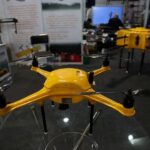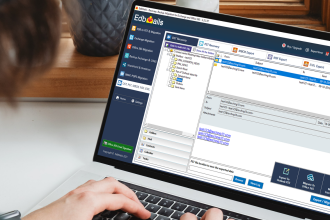Solar panels are a boon to this generation. They are a technological advancement that saves the environment while being pocket-friendly. The technology in solar panels is advancing each day with innovations that make life much more convenient.
As a homeowner, there are numerous benefits of installing solar panels. Firstly, you can save a ton of money on power bills, at least for the next twenty years. Secondly, it is good for the environment as it is a clean and renewable energy source to produce electricity. Many solar companies offer leasing and part-payment options for your convenience as well. All you need to do is search “solar company near me,” and the relevant retailers in your area will pop up on your search engine.
Moreover, the government also has many incentives for homeowners who install solar panels, such as feed-in compensation and other policies to motivate homeowners.
If you have already made up your mind to install a solar energy system at your home, then you must know there is more than one type of panel out there for you to choose from. Each of these different types of solar panels not only looks different but has different features. Each kind of panel has different energy efficiency levels and different costs.
The best kind of solar panel depends on factors like your budget, energy requirement, location, roof space, and access to sunlight.
Here are the different types of solar panels to help you make a better decision.
1. Solar roof shingles
Traditional solar panels can hamper the aesthetic appeal of your house as they stand out. However, solar roof shingles typically look like normal concrete roof shingles used to roof the house. These solar shingles provide you all the benefits of standard solar panels while maintaining the exterior looks of your home.
They are as practical and durable as the asphalt shingles while providing the additional benefit of solar energy. These shingles can withstand a variety of weather elements similar to concrete shingles.
Each solar shingle you install on your roof has the capability of producing solar energy ranging from 13 to 67 watts.
But, solar roof shingles might prove to be more expensive than other types of solar panels.
2. Polycrystalline solar panels
An ordinary rooftop solar panel setup consists of up to forty solar cells made from crystalline cells. There are two main types of similar solar panels; polycrystalline and monocrystalline cells. As a homeowner, it is crucial to understand the difference between the two as it will determine your choice of panels since the pricing and energy outputs of the two differ.
Starting with polycrystalline, these solar panels were developed and in the market first. These cells are made from melted silicon poured into a rectangular shaped mold and installed in the panel.
Industry manufactured polycrystalline solar panels are deemed the most effective since they fully utilize silicon and there is no wastage of any material in the production process.
However, in comparison to the monocrystalline panels, these panels do not tolerate heat well. Moreover, these panels do not produce as much electricity as the monocrystalline panels, which affects the amount of feed-in electricity you can sell and use.
3. Monocrystalline solar panels
Since these solar panels are made from pure silicon, they are more energy-efficient. Monocrystalline panel cells are made in a cylindrical shape that enables these cells to achieve more efficiency.
The main determinant is calculating your sun number score when choosing between the monocrystalline and polycrystalline panel systems. It will enable you to figure how much potential energy your solar panel systems can produce at your location.
To make these solar cells, manufacturers use silicon ingots and carve them into the shape of a cylindrical wafer. In the process, manufacturers smoothen the edges of solar cells. Since their form and shape help them produce more electricity, you will need fewer of them.
However, these cells cost more than polycrystalline solar cells to purchase and install. But, solar companies give better warranty periods for monocrystalline cells, and they tend to last longer.
Both monocrystalline and polycrystalline panels can be installed on any roof using the solar mounts on a designated area on your roof.
4. Thin-film solar panels
These solar panels are often not used for homes, but they are gaining popularity with recent innovations in the industry.
It is produced by rolling out layers of semiconductor materials such as silicon, cadmium telluride, and copper indium gallium selenide onto a flat film.
These solar panels are not as effective as crystalline solar panels, and they require more roof space.
Since they are not very durable, companies offer shorter warranties.
However, thin solar panels are cost-effective. And, with the solar industry being highly competitive, there are innovations each day. Researchers are even trying to make these thin solar panels to replace the shingle solar panels.
Other than deciding the type of solar panels, you need to determine the type of inverter you want for your energy system. There are three types of inverters for users to choose from; central or string, microinverters, and power optimizers. These investors are a necessary expense as they are essential to convert the DC electricity from the solar panels to usable AC electricity for your home.
Types of Inverters
1. String inverters
These inverters are very common and cost the least among the three types of inverters. String inverters are most effective for well-lit roofs.
2. Microinverters
If you buy high-quality solar panels, most come with microinverters pre-installed in each panel to convert DC to AC. But, you can add the inverter separately as well. However, these inverters are the most expensive of the bunch.
3. Power optimizers
Same as the microinverters, these optimizers are often embedded in the solar panels. But there is an additional step when you use power optimizers as the power has to go into conditioning which increases the overall efficiency.
Purchasing and installing solar panels at your home is a challenging task, and as a homeowner, one might not be aware of all the intricacies involved. So, it is best to search for “solar company near me” on google and seek the help of professionals to determine the size and type of solar panels and inverters you need. By far the most popular inverter for homeowners in a Fronius string inverter. If you want to learn more please read this Fronius review.















